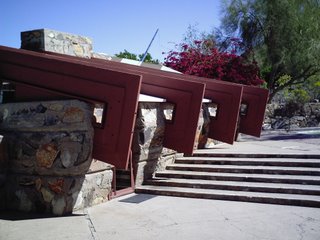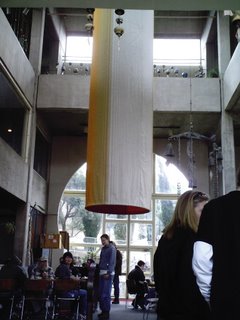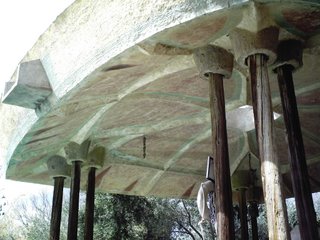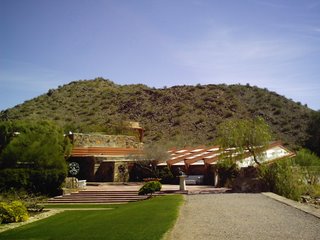




During my visit to the states I got to see first hand and up close the work of one of my favourite architects, Frank Lloyd Wright (born Frank Lincoln Wright) lived from 1867 to 1959. During most of these years, from 1885 to 1959, he was a prolific architect, with close to 500 of his designs built (and hundreds more remaining unbuilt) - a career lasting three quarters of a century, and unequaled in output. Mr. Wright worked for architects J. Lyman Silsbee and Louis Sullivan, and he later himself trained many architects at his Taliesin School. Frank Lloyd Wright expoused "organic architecture" and is responsible for the Prairie and Usonian residential styles. Mr. Wright was born in Wisconsin, and he lived most of his life there, also spending some time living in New York City, Germany, Japan, Oak Park (Illinois), and the winter location of his school in Arizona.
It was this winter school at Taliesin West that I got to visit, and to see his work "in the flesh", or the concrete and mortar, the shapes, the forms, were breath taking.
I also got to visit two projects by one of Wrights students, Paolo Soleri, born in Turin, Italy on June 21, 1919, Paolo Soleri was awarded his Ph.D. with highest honors in architecture from the Torino Polytechnico in 1946. He came to the United States in 1947 and spent a year-and-a-half in fellowship with Frank Lloyd Wright at Taliesin West in Arizona. In 1956 he settled in Scottsdale, Arizona, establishing the Cosanti Foundation, a not-for-profit educational foundation. The Foundation's major project is Arcosanti, a prototype town for 5,000 people designed by Soleri, under construction since 1970. Located at Cordes Junction, in central Arizona, the project is based on Soleri's concept of "Arcology," architecture coherent with ecology. Arcology advocates cities designed to maximize the interaction and accessibility associated with an urban environment; minimize the use of energy, raw materials and land, reducing waste and environmental pollution; and allow interaction with the surrounding natural environment.


No comments:
Post a Comment